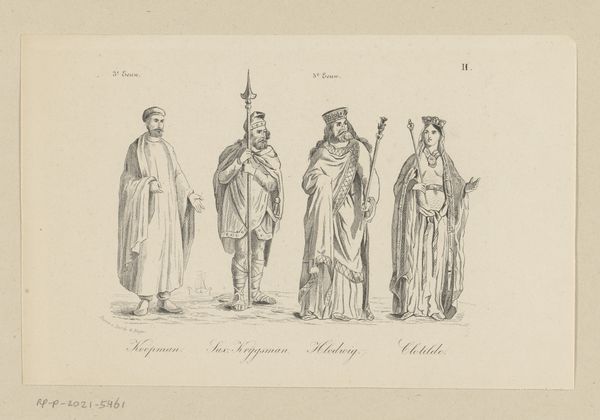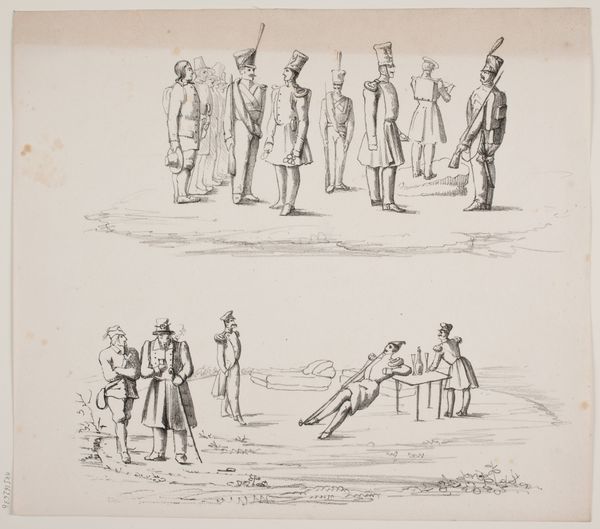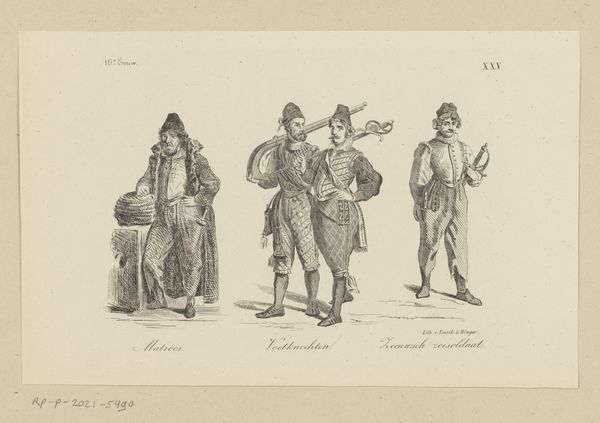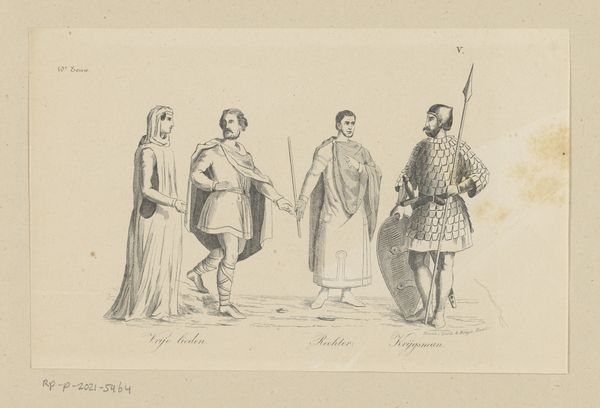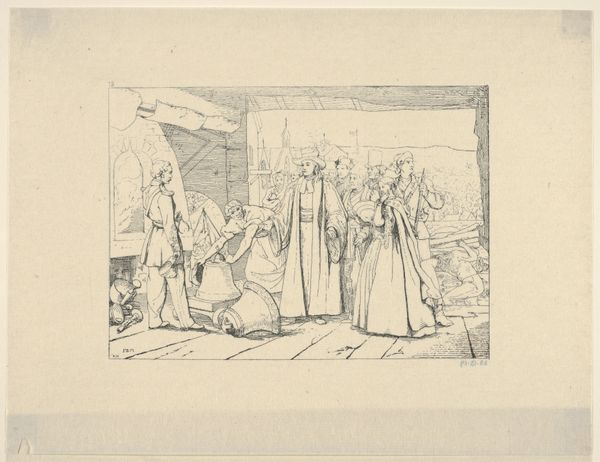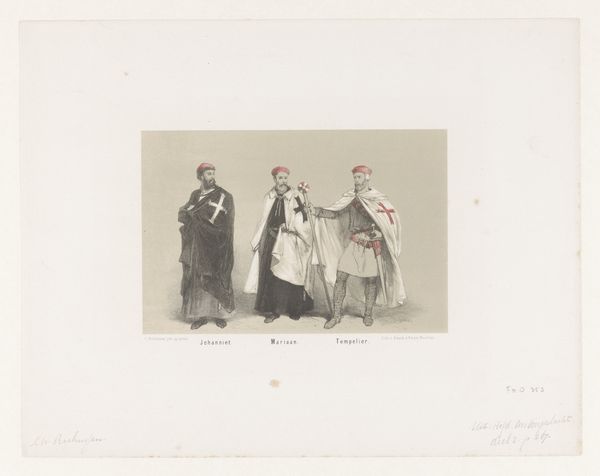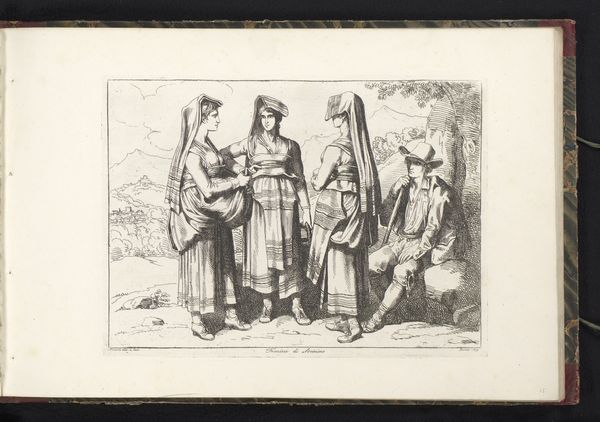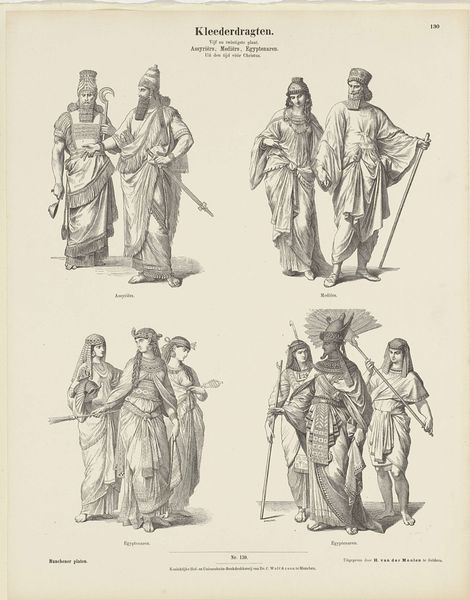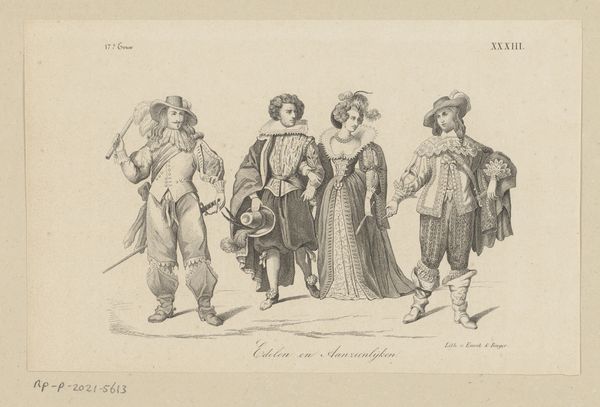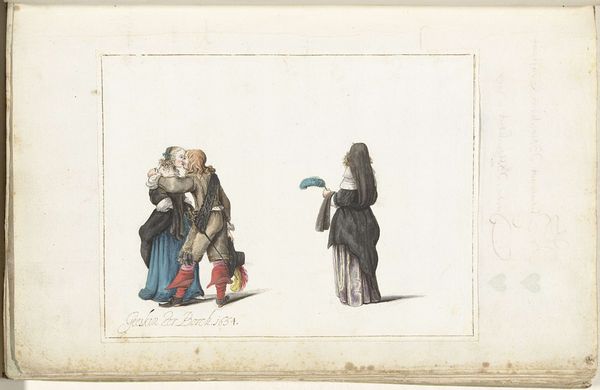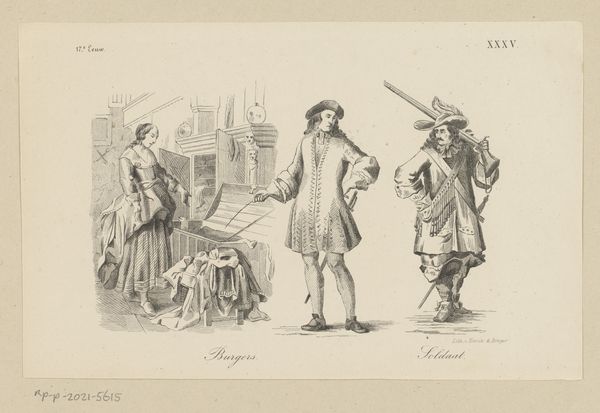
Burgers, edelvrouw en boogschutter in kleding uit de vijftiende eeuw 1857
0:00
0:00
drawing, pen, engraving
#
drawing
#
pencil sketch
#
figuration
#
11_renaissance
#
costume
#
pen
#
genre-painting
#
history-painting
#
academic-art
#
engraving
#
realism
Dimensions: height 148 mm, width 235 mm
Copyright: Rijks Museum: Open Domain
Curator: Good morning! Let's explore this print titled "Burgers, edelvrouw en boogschutter in kleding uit de vijftiende eeuw," made around 1857. It appears to be an engraving with pen and pencil, currently held at the Rijksmuseum. I am intrigued by the texture created. What jumps out at you? Editor: Well, the clothing of the figures is incredibly detailed. They're all from a very different social class, from what I can gather. The artist seems quite invested in documenting the materials and textures of each garment, how it drapes, folds... I am curious how we interpret the artist's choice to represent such specific material and labor details? Curator: It speaks volumes about the era in which the piece was produced. The mid-19th century witnessed a surge in interest in historical accuracy, partly fueled by industrial advancements impacting textile production and societal structures. Consider the engraving itself—a mechanically reproducible image—chronicling handmade clothing. What contradictions might this reveal? Editor: Hmmm. So, the artist is using an emerging industrial technique, engraving, to immortalize handmade garments of a bygone era. Does this mean the image can also be read as a document of class tensions during the artist's era? A way of understanding one’s identity through consumption and labour? Curator: Precisely. Look closely at how the 'burghers' are positioned, seemingly accompanied by someone providing assistance. The lady's pointed hat, the archer and his crossbow. How much labor was embodied in the making of these costumes and their weaponry? What might the social relationships be between these social types? Editor: It is all connected: access to labor, industrial advancement, mechanical printing. Thanks for pointing it out; I would've been too focused on the historicism rather than the art’s socio-economic context. Curator: Indeed. Focusing on materiality gives us new avenues to understand art's connection to its time. Always ask: Who made it? And under what conditions?
Comments
No comments
Be the first to comment and join the conversation on the ultimate creative platform.
